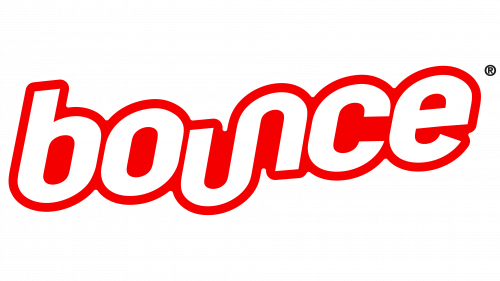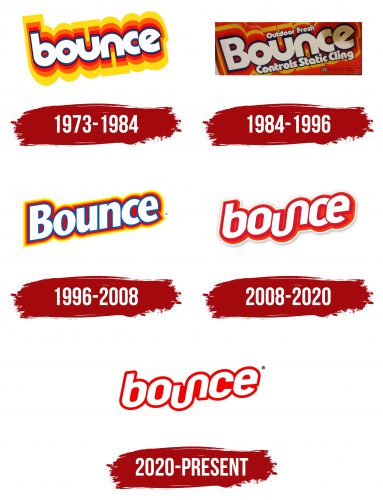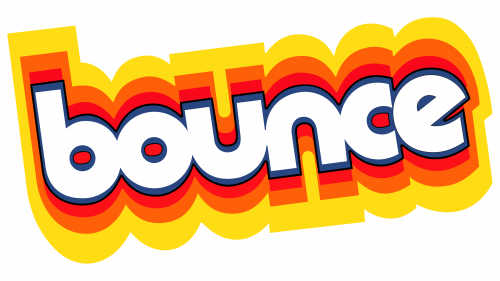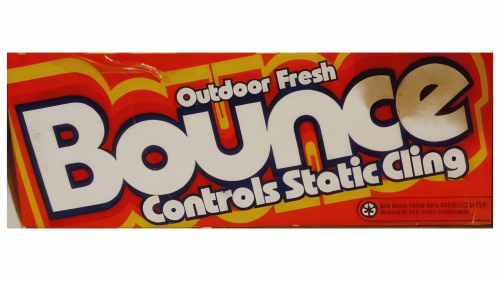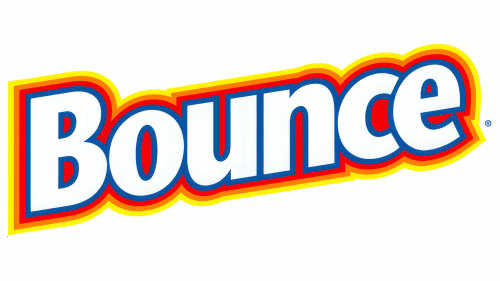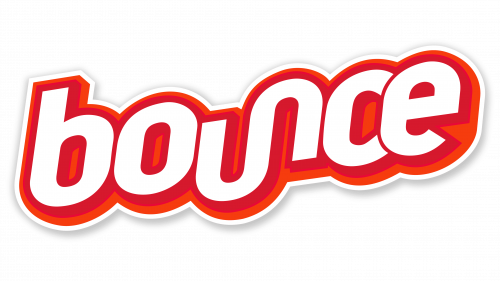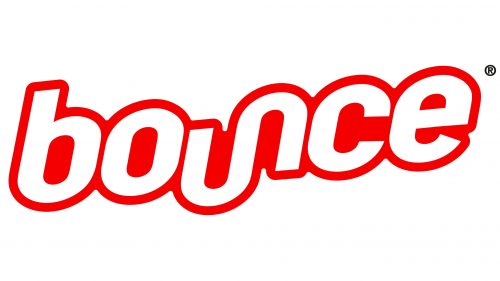The Bounce logo symbolizes softness and elasticity, highlighting the key properties of the company’s products. The emblem emphasizes the primary purpose of the products: fabric care, making them soft with a pleasant texture, smoothing out wrinkles, and eliminating static electricity.
Bounce: Brand overview
In the 1960s, Procter & Gamble (P&G) initiated research to enhance fabric maintenance and laundry care, marking the beginning of Bounce’s history. P&G searched for a workable remedy for static electricity on textiles after drying, which was prevalent.
After several years of research and development, P&G released Bounce, the first fabric softener sheet made specifically for dryer use, in 1972. This ground-breaking device lessened static electricity and improved the softness and scent of clothing.
The product was first available in two scents: Outdoor Fresh and Regular. Customers immediately liked it because of its practicality and efficiency.
In the 1970s, the brand aggressively grew its market share in the United States. The business ran protracted marketing efforts emphasizing the advantages of the product. A primary promotional theme touted by the brand was that their clothing was “soft as a cloud.”
In the 1980s, the brand expanded rapidly. New scents were added to the lineup, including “Spring Fresh” and “Fabric Softener Sheets with Freshness of Downy.” This allowed the brand to accommodate a wide range of customer tastes.
The 1990s saw continued innovation. In 1993, a fragrance—and dye-free version for sensitive skin debuted, expanding the target market to include individuals with allergies and sensitive skin.
The product line continued to grow in the 2000s. The Dryer Bar, a solid fabric softener bar that could be fastened to the dryer’s drum, was introduced in 2001. This product didn’t need to be added to every laundry load, making it even more convenient.
Dryer Sheets with Febreze Freshness technology were first released in 2008. The odor-eliminating technology of Febreze and the powerful static-fighting properties of the product were blended in this partnership with another P&G brand.
The 2010s marked an emphasis on natural products and sustainability. In 2014, introducing the 100% renewable wind-powered Free & Gentle range demonstrated how consumer concern over environmental issues is expanding.
A brand-new product range, “Pet Hair and Lint Guard,” debuted in 2020. This creative series was created especially to address the problem of lint and pet hair getting on clothes. These treatments eliminated pet hair and lint from garments during drying, reduced static electricity, and softened fabric. This innovation satisfied pet owners’ growing need for specialized laundry care products.
In 2022, a new product called “Scent Booster” was introduced. This granule can be added to the washing machine to improve the laundry scent. The target audience for this product was customers who wanted a stronger and longer-lasting aroma on their clothing. “Scent Booster” came in various scents, including newer, more modern perfumes and vintage scents.
The “Laundry Guide” mobile app was released in the same year, bolstering the company’s online presence. This app included customized advice on caring for fabrics, suggested product uses, and alerts when it was time to change the dryer sheets or refill the laundry supplies.
The brand has consistently developed and adjusted to meet the shifting demands of its clientele, starting with basic sheets to lessen static electricity and expanding to a wide array of specialty fabric care products.
Meaning and History
What is Bounce?
It is a popular brand of fabric softener and dryer sheets manufactured by Procter & Gamble. Known for reducing static electricity, softening fabrics, and giving laundry a fresh scent, it has become a well-known brand in the United States. The brand’s main product is dryer sheets, added to laundry in the dryer to add softness and fragrance. The company has expanded its product line to include liquid fabric softeners, dryer bars, and fragrance enhancers, offering consumers various soft, fresh, and fragrant laundry options. The brand is known for pleasing scents, from classic fresh linen to more complex scents. The products are designed to be compatible with different types of fabrics and washing machines, making them a versatile choice for many households.
1973 – 1984
The first Bounce emblem gives the impression that the lettering is floating on the water’s surface. Reflections and shadows spread outward as if the word has been cleansed and now rises, radiating freshness. The upward slant of the letters enhances the bounce effect, reflecting the essence of the brand’s name. This image perfectly suits a fabric softener with a smoothing effect. The red, orange, and yellow shadows emphasize the product’s effectiveness, evoking a sense of fragrance, warmth, and comfort.
1984 – 1996
The logo update addressed a key issue of the previous design by adding explanatory captions that informed consumers about the product’s purpose. References to freshness and eliminating static electricity on fabrics highlighted the main benefits of using Bounce. The importance of the brand was emphasized by transitioning to an initial capital letter, while the rest of the font remained unchanged.
1996 – 2008
The logo adopted a cleaner and more refined lettering with thin outline lines, focusing attention on the name. Each layer and color of the outline symbolized one of the brand’s actions. Blue represented washing; red indicated smoothing and static electricity removal; orange emphasized softness and yellow highlighted fragrance. Overall, the design reflected improved fabric quality and condition, underscored by the warm and vibrant presentation.
2008 – 2020
The 2008 logo gained originality, allowing the product to stand out among competitors. The merging of the letters “n” and “u” into a single wave symbolized the washing process and the smoothing of wrinkles on clothing. This element became a trademark of the product. The maroon side sections of the letters added volume and depth to the text, while the red background emphasized the importance and effectiveness of Bounce. The white outline of the logo created the effect of a sticker that could easily be removed from the fabric, enhancing the sense of cleanliness and safety when using the product.
2020 – today
The emblem’s modern design successfully retains the elements that make the brand recognizable while adapting it to contemporary visual communication standards, emphasizing the product’s key benefits. The logo has become more streamlined while maintaining its energy and appeal, helping the brand remain relevant in the market and attract new consumers.
The Bounce logo embodies a minimalist design while retaining dynamism and brightness. The red outline around each letter draws attention and highlights the product’s premium quality and significance in the market. This vibrant color stands out, creating a sense of energy and action that aligns with the product’s main effect—smoothing fabrics without ironing.
The original merging of the letters in the emblem is preserved and continues to highlight the product’s key feature. This design choice underscores the consistency and completeness of the product’s effect on fabrics, making the emblem more memorable. To the viewer, the lettering seems to “bounce” in place, evoking an association with the lightness and flexibility the product provides.
The unchanged font supports a sense of brand stability and recognition. However, compared to previous versions, the modern emblem lacks the depth and three-dimensional highlighting of the letters, making it flatter and more contemporary. This decision reflects the trend toward simplification and minimalism, which is becoming increasingly popular in identity design, especially among brands striving for clarity and straightforward communication.
The name “Bounce” implies action and movement, also reflected in the logo’s visual representation. This word is associated with lightness and speed, which perfectly aligns with the idea of a product that simplifies fabric care, allowing users to avoid the hassle of ironing.
